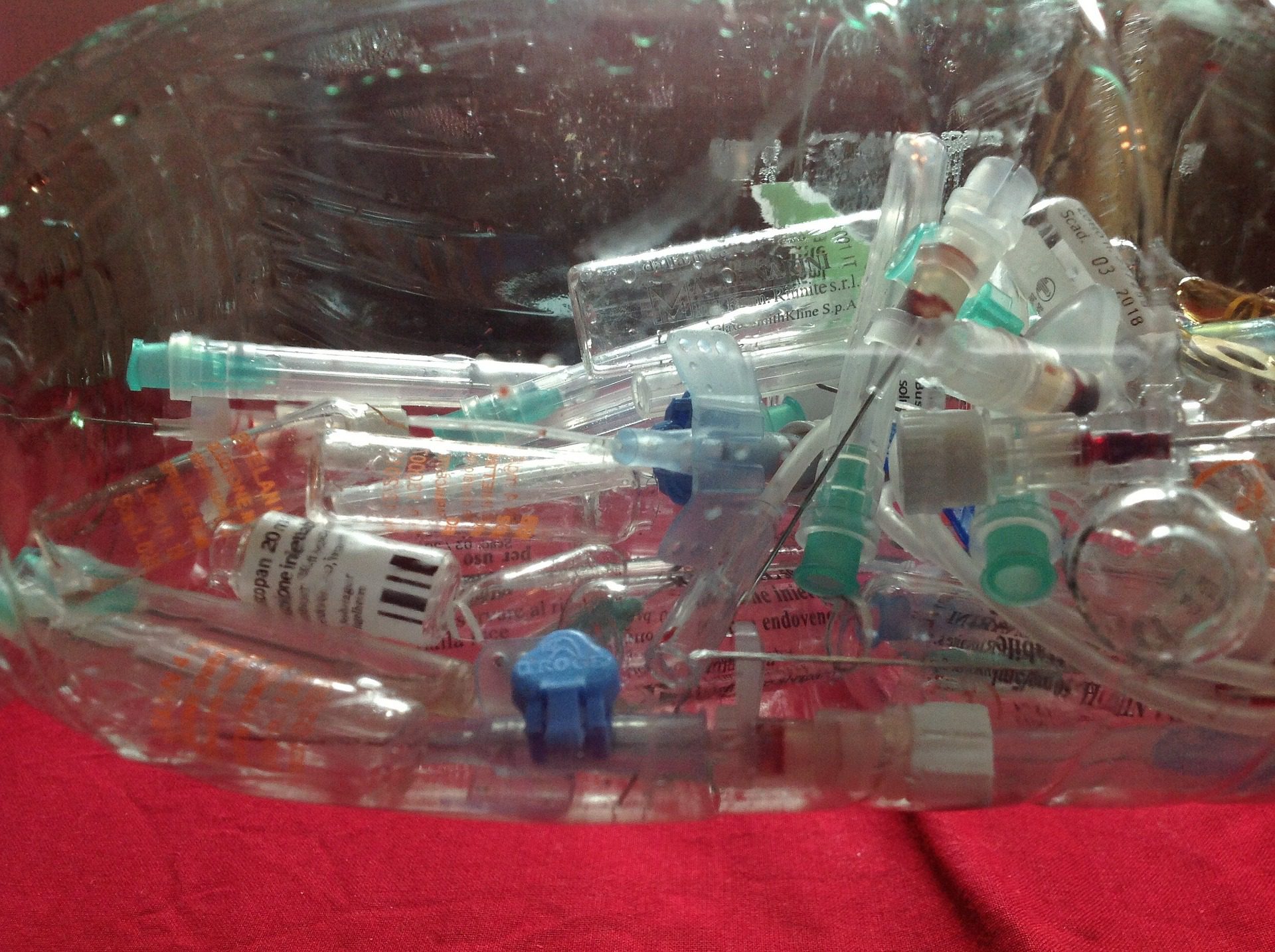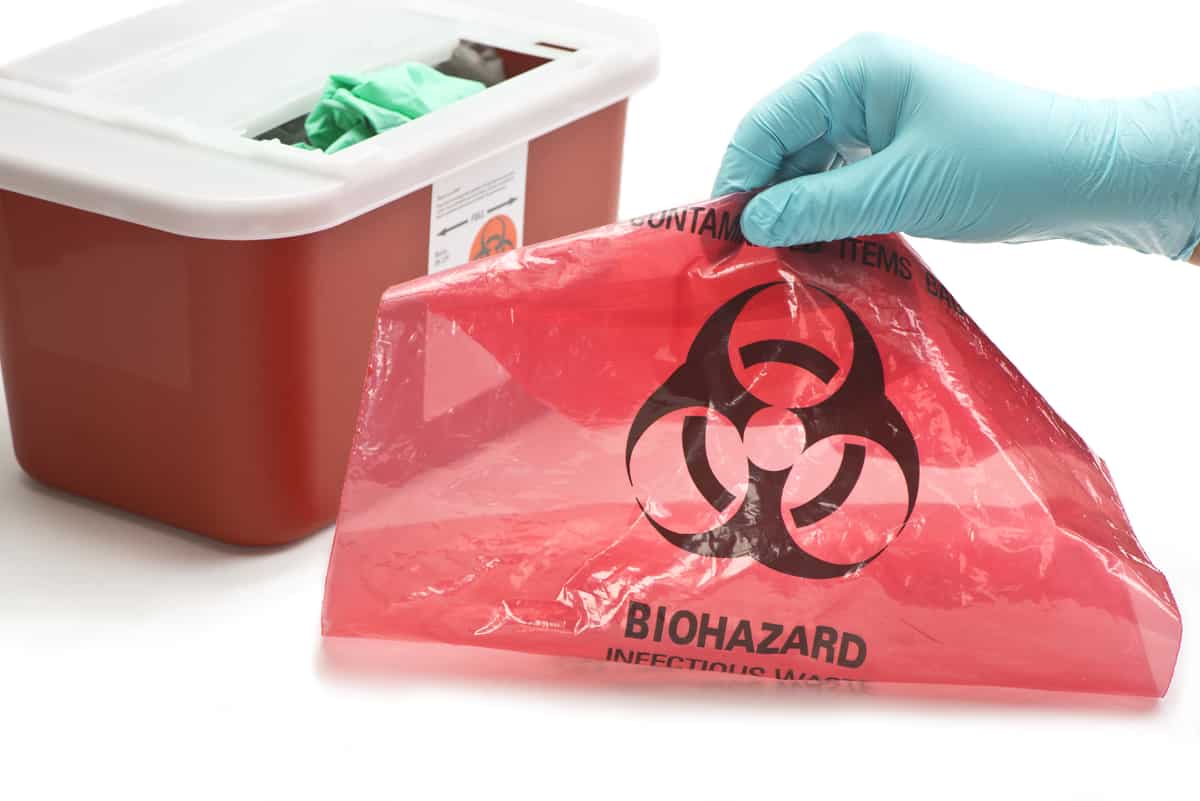Keep Ahead of Regulations: Expert Advice on Medical Garbage Disposal
In a world where the health care market is constantly evolving, it is essential for clinical facilities to stay ahead of guidelines when it comes to the proper disposal of clinical waste. From comprehending the different classifications of medical waste to implementing the best collection and segregation methods, this conversation will certainly offer actionable tips and important understandings to aid centers remain in advance of guidelines in the ever-changing landscape of medical waste disposal.
Understanding Medical Waste Categories
Recognizing clinical waste groups is vital for appropriate disposal and management in healthcare centers. Clinical waste refers to any kind of waste generated by medical care activities that might position a threat to public health or the setting. It is vital to categorize clinical waste precisely to guarantee its risk-free handling, disposal, therapy, and transportation.
There are several categories of medical waste that health care centers require to be aware of. The most common groups consist of contagious waste, pathological waste, sharps waste, pharmaceutical waste, and chemical waste. Each category has details guidelines and laws for its proper administration and disposal.
Transmittable waste includes products polluted with blood or other physical fluids, such as gloves, gowns, and lab societies. Pathological waste refers to human cells, organs, or body components that need special delivery and disposal. Sharps waste includes made use of needles, syringes, and other sharp objects that can create injury and transmit infections. Drug waste consists of run out, extra, or infected medications that require cautious handling and disposal. Chemical waste consists of solvents, disinfectants, and other chemical compounds used in health care centers.
Remaining Up-To-Date With Regulatory Changes
Staying existing with governing modifications is crucial for health care facilities to guarantee compliance and correct administration of medical waste disposal. medical waste removal near me. With regulations frequently progressing, it is necessary for health care facilities to remain current to avoid penalties, penalties, and potential injury to the environment and public wellness
To remain in advance of regulatory changes, healthcare centers should develop a system for monitoring and tracking updates. This can be done by registering for regulative e-newsletters, attending workshops and conferences, and proactively taking part in market associations. Additionally, facilities ought to designate an employee or team in charge of staying notified and distributing info to pertinent stakeholders.
Normal interaction with regulatory agencies is additionally essential. Health care facilities need to develop partnerships with regional, state, and government agencies to guarantee they know any kind of adjustments in guidelines that may impact their waste administration techniques. This can be done via normal conferences, involvement in public comment durations, and aggressive engagement with regulative agencies.
Furthermore, medical care centers need to think about partnering with waste monitoring business that focus on clinical garbage disposal (medical waste disposal services with WasteX). These business are typically skilled in the most recent regulations and can give support and assistance to make certain conformity
Executing Correct Collection and Partition Approaches
To effectively handle clinical garbage disposal, medical care facilities should develop appropriate collection and segregation approaches in conformity with regulative guidelines. Applying these approaches makes certain the risk-free handling and disposal of possibly unsafe materials, safeguards the atmosphere, and lessens the danger of injuries and infections to healthcare employees and the public.
Proper collection and partition techniques include using marked containers and classifying systems. Healthcare facilities need to supply plainly identified containers for various types of clinical waste, such as sharps, transmittable waste, pharmaceutical waste, and non-hazardous waste. These containers need to be color-coded and clearly significant to avoid complication and promote simple identification.
Furthermore, healthcare centers ought to educate their staff on the proper treatments for collecting and setting apart clinical waste. This consists of enlightening them on the various sorts of waste, the ideal containers to utilize, and the value of complying with policies and standards. Normal training sessions and correspondence course need to be performed to ensure that employee continue to be current on best techniques.
Additionally, medical care centers should develop medical waste disposal services with WasteX a system for regular collection and disposal of clinical waste. This might entail partnering with certified waste administration business that focus on clinical waste disposal. These business will make certain that the gathered waste is transferred and disposed of in compliance with regulatory needs.
Picking the Right Disposal Methods

Incineration is among the most common and efficient methods for taking care of certain types of medical waste, such as pathological waste and sharps. visit the site It includes the controlled burning of waste at high temperatures, decreasing it to ash. Incineration can launch dangerous toxins into the air and add to air contamination.

Various other disposal methods consist of chemical therapy, microwave treatment, and landfilling. Chemical treatment involves the use of chemicals to reduce the effects of the waste and decontaminate. Microwave therapy utilizes microwave energy to heat and disinfect the waste. Landfilling entails burying the waste in an assigned land fill location (medical waste disposal services with WasteX). However, landfilling needs to be the last option because of the potential risk of contamination to dirt and groundwater.
Ensuring Conformity With Paperwork and Training
After thoroughly taking into consideration the appropriate disposal techniques for medical waste, health care facilities should make sure conformity with laws and decrease ecological influence by implementing efficient documents and training treatments. This action is important in preserving a safe and lasting atmosphere for both healthcare workers and the public.

Medical care employees that deal with medical waste must receive ideal training on waste segregation, dealing with, and disposal procedures. By offering extensive training, health care centers can encourage their personnel to make enlightened decisions and reduce the threat of improper waste disposal.
Conclusion
In conclusion, remaining in advance of regulations in clinical garbage disposal is critical for health care facilities. medical waste removal. Comprehending the different categories of clinical waste, staying updated with governing changes, executing proper collection and segregation techniques, picking the suitable disposal methods, and making sure compliance through paperwork and training are all essential steps. By complying with these guidelines, health care organizations can efficiently manage and get rid of of clinical waste in a risk-free and liable way
From recognizing the various groups of medical waste to applying the best collection and partition approaches, this discussion will provide valuable insights and workable ideas to assist centers stay in advance of guidelines in the ever-changing landscape of medical waste disposal. - medical waste disposal services with WasteX
The most typical groups include contagious waste, pathological waste, sharps waste, pharmaceutical waste, and chemical waste. Medical care facilities should offer clearly classified containers for different kinds of medical waste, such as sharps, contagious waste, pharmaceutical waste, and non-hazardous waste. Health care centers need to establish a thorough system to tape and track all aspects of medical waste disposal, including types of waste created, quantities, and disposal approaches utilized. Health care employees that take care of clinical waste needs to get suitable training on waste segregation, managing, and disposal procedures.